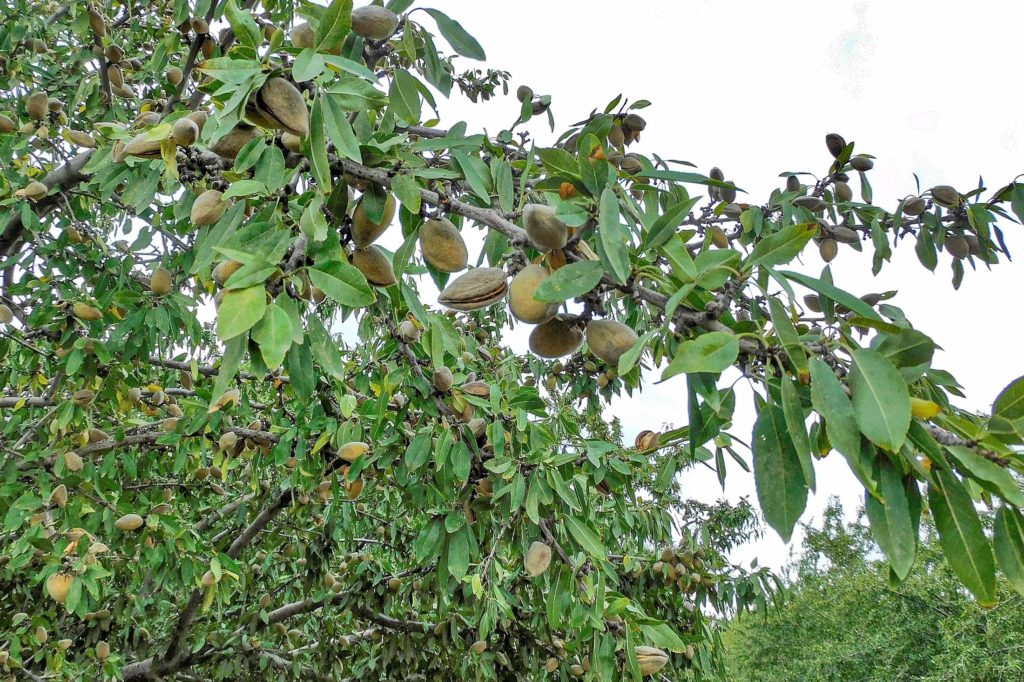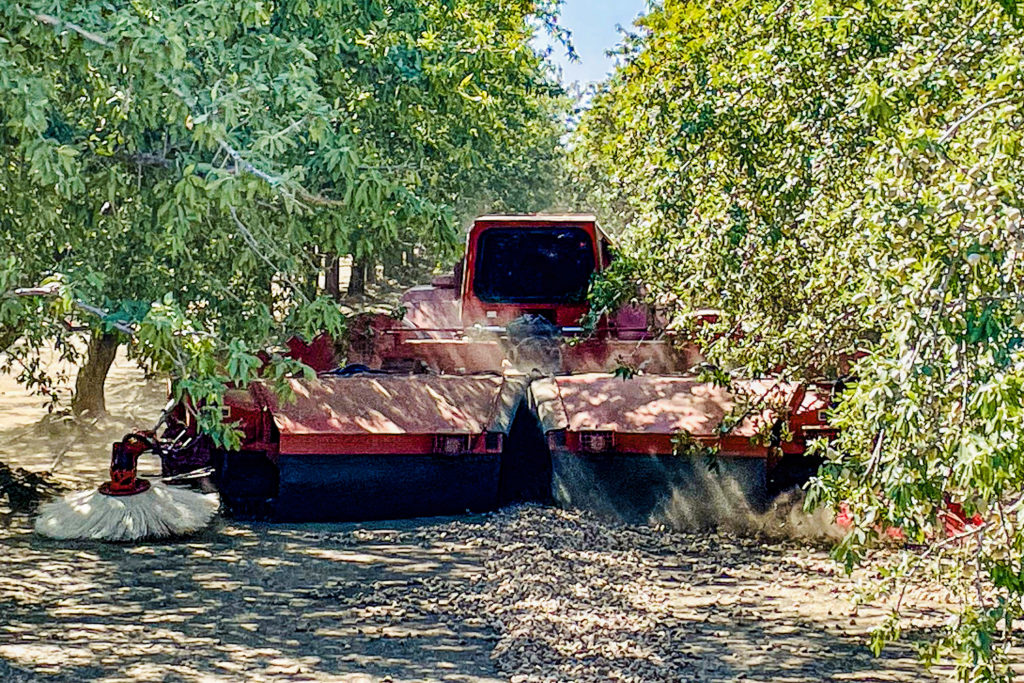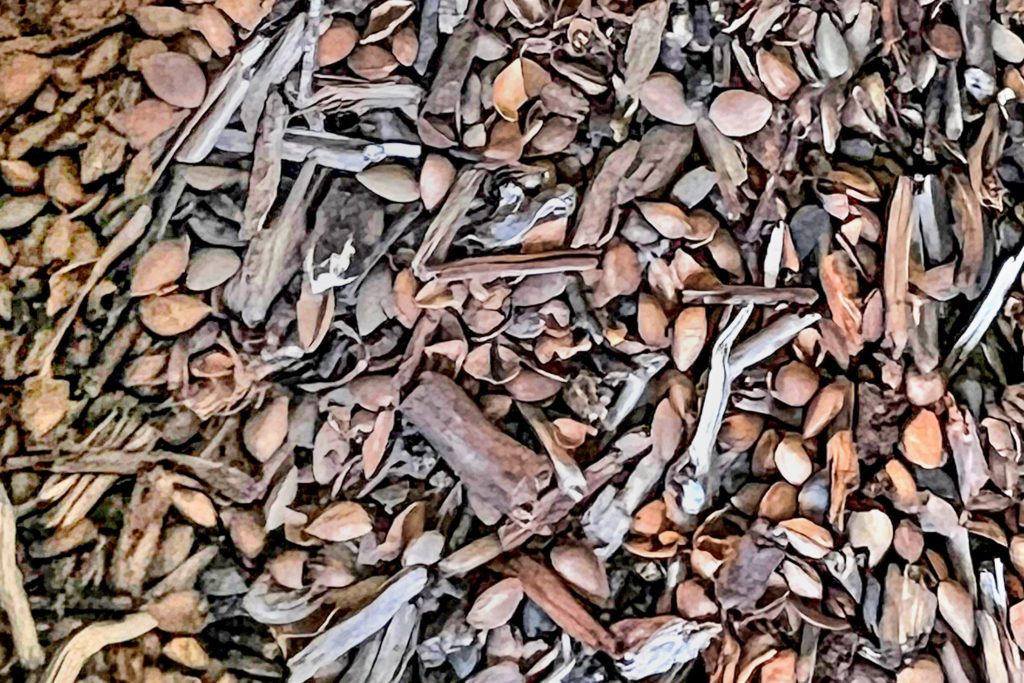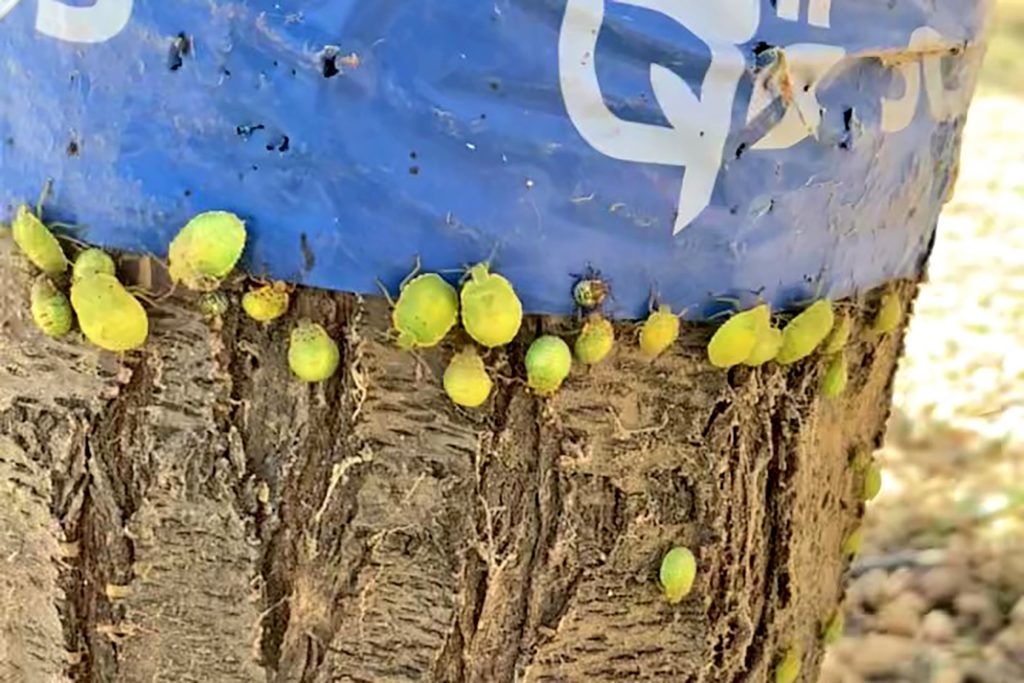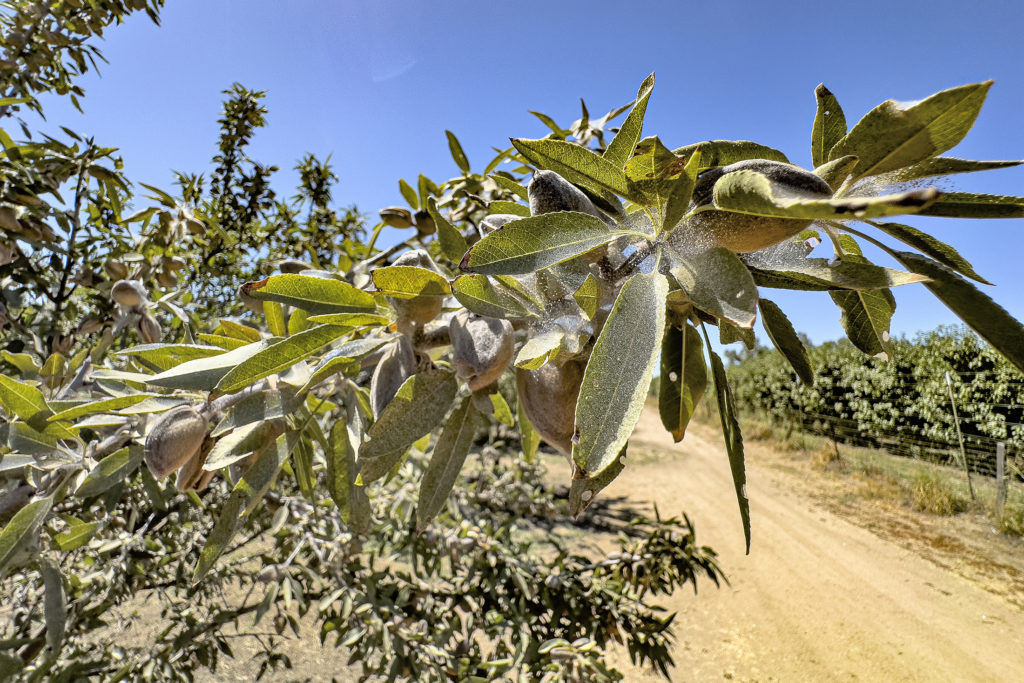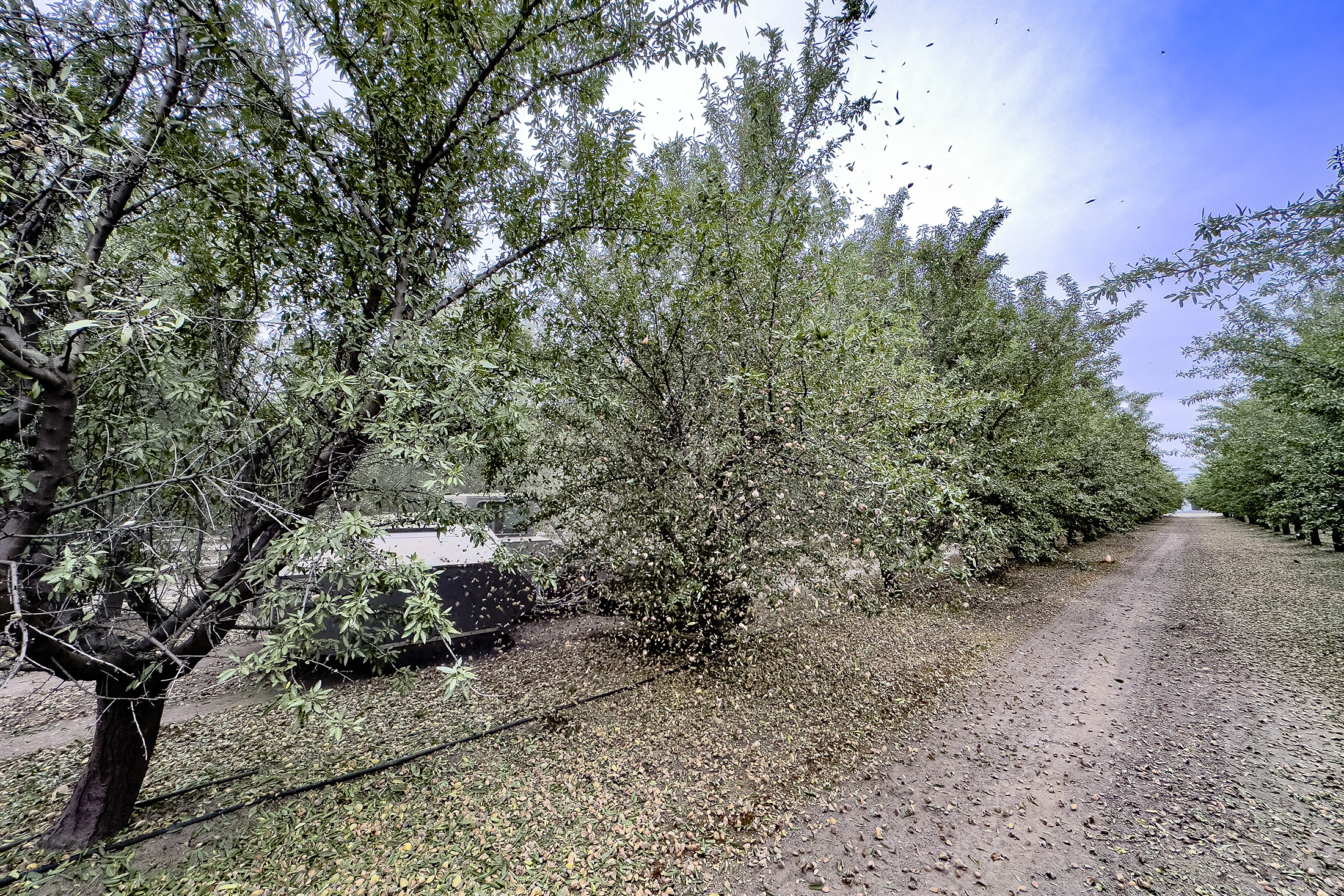
This report covers the conditions and activities observed from Monday, July 29, 2024, through Sunday, August 25, 2024. The next scheduled report will be posted on Monday, September 30, 2024. In the event of any significant occurrences prior to that date, this site will be updated as soon as possible.
August provided California’s almond growers with a welcome respite from the abnormally high temperatures experienced in July. While daily maximum temperatures peaked just above the 100-degree mark early in the period in the Sacramento and northern San Joaquin Valleys, readings in the southern San Joaquin peaked just a few degrees higher. Readings then slid progressively back into the 90’s until a weakening low-pressure system dropped temperatures briefly into the mid and upper 80’s in the final days of the month. Morning lows exhibited a more stable pattern, with readings ranging between the upper 50’s and upper 60’s in most areas of the Valley. Observers in the Sacramento Valley reported receiving variable amounts of rainfall from the fast-moving storm system in the period’s final week. Precipitation totals ranged from trace amounts to as much as 0.20 inch, with the vast majority of locations receiving from 0.05 to 0.15 inch. Observers in the Stanislaus and San Joaquin counties reported only a few scattered raindrops.
The pace of harvest operations increased over the past weeks, reaching “full throttle” in all areas of the Central Valley by the end of the period. While the brief rain received in areas of the Sacramento Valley halted operations for a day or two to allow crop on the ground to dry, growers are reporting that operations will continue in the coming week. Growers are currently harvesting Nonpareil and Independence and have noted the many pollinator varieties in Nonpareil plantings are also ready to be shaken. Observers have noted that kernel moisture levels in many orchards are low enough to allow growers to pick up crop within just a few days of shaking. First loads were received at Blue Diamond facilities on August 5 and deliveries are expected to reach peak levels during the first week of September.
Growers typically track several metrics during the year, with one common value being the number of truck loads of in-hull product shipped from the orchards to the huller/shellers. Growers in several areas are reporting lower than expect loads coming from the orchards and are questioning the impacts of the extended period of high temperatures experienced in July. Many have noted smaller sizes and some withered kernels in their Nonpareil, most likely the result of higher crop sets combined with the adverse impacts of the high temperatures and resulting water stress during initial phases of hull split.
Some growers are wrestling with difficult situations within the orchards resulting from decisions made earlier in the growing season, particularly regarding weed control. As may be seen in a photo accompanying this report, decisions made earlier in the growing season can have adverse implications during the harvest, with excessive amounts of foreign material on the orchard floor impeding harvest machinery and contaminating loads of in-hull product delivered to the huller/sheller.
Following the 2023 crop’s elevated reject levels and the challenges posed this year, growers have been anxiously waiting for the result of this year’s work.
- Growers have been pleased to note that damage caused by Navel Orange Worm (NOW) on crop harvested thus far is running below last year’s levels. With much of the Nonpareil on the ground or scheduled to be shaken in the coming weeks, growers, and Pest Control Advisors (PCA’s) reported the start of the latest NOW flight in the last week of the period. This has caused a bit of concern as PCA’s ponder the potential need for treatment to prevent damage on crop still in trees waiting to be shaken. While reject levels in general and damage from NOW in particular is running at lower levels this year, Brown Spot, the result of feeding by Plant Bugs, specifically Leaf-Foot Plant Bugs and Stink Bugs is running at higher levels. Some have noted populations of Plant Bugs can be observed falling from the trees during shaking, causing concern for increased damage in varieties still to be shaken.
- Growers and PCA’s have been on the watch for Carpophilus beetles, which were first reported at damaging levels in 2023. University researchers have reported that the beetle can be found in all areas of the Valley, and all have been wondering how severe any impacts may be. While still early in the harvest, thus far, damage has been noted in orchards with poorest sanitation and excessive weed growth. Carpophilus damage is significantly different than that of NOW and may be seen in a photo accompanying this report.
- Observers in all areas are reporting that web-spinning mites are plaguing many orchards. Treatments for NOW and Carpophilus combined with the excessive temperatures during July have conspired to drive explosive growth in mite infestations. Observers are reporting that many orchards are becoming “webbed over” as populations expand, leading many to state that infestations are the worst seen in many years. Mites are capable of defoliating trees prematurely, reducing photosynthesis and nutrient uptake during the critical bud differentiation period. The most severely impacted orchards may see new leaves and even next year’s flowers opening this year, thus reducing the potential of the 2025 crop. Where this occurs, simply stated it means that next year’s resources and energy are being expended this year.
With the increasing pace of harvest, huller/sheller operations are expected to all be operating in the final week of August. Several have reported that their operations progressed from startup to 24-hour operations in just a few days. Larger operations have already begun stockpiling product upon arrival as they are unable to keep up with the pace of harvest. Harvest operations will continue for several weeks, with growers pausing to irrigate if time allows prior to shaking of the next variety where possible. In any event, critical post-harvest irrigations will be completed as soon possible to support the following year’s crop.
By Mel Machado, Vice President of Member Relations
Photos By: Ben Goudie, Nicole Jansen, Christine Ivory, and Mel Machado

